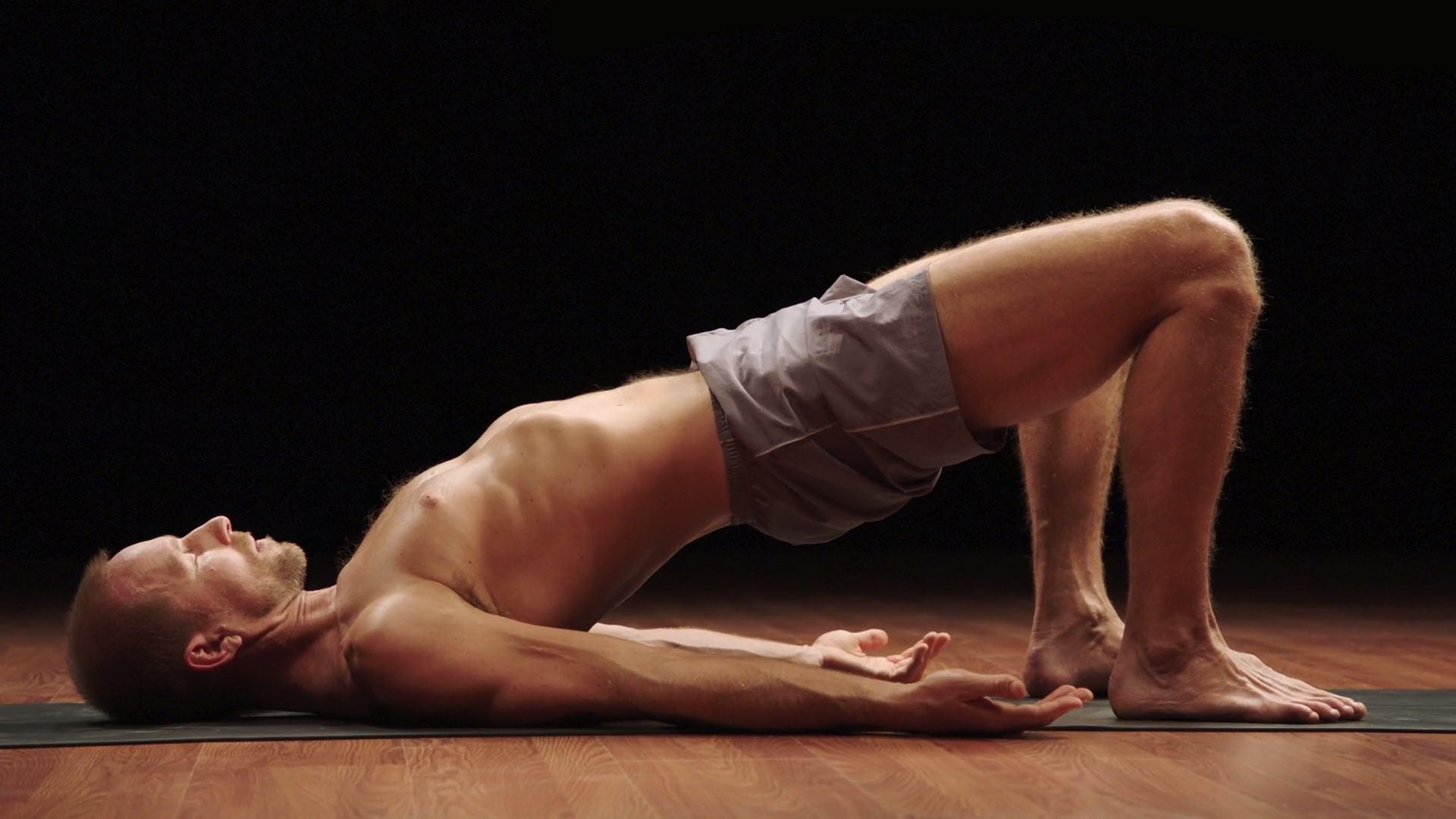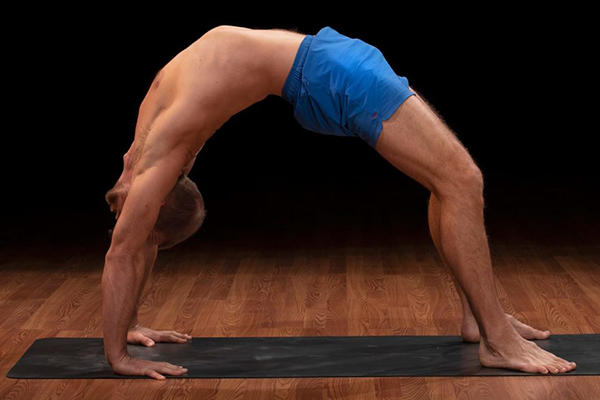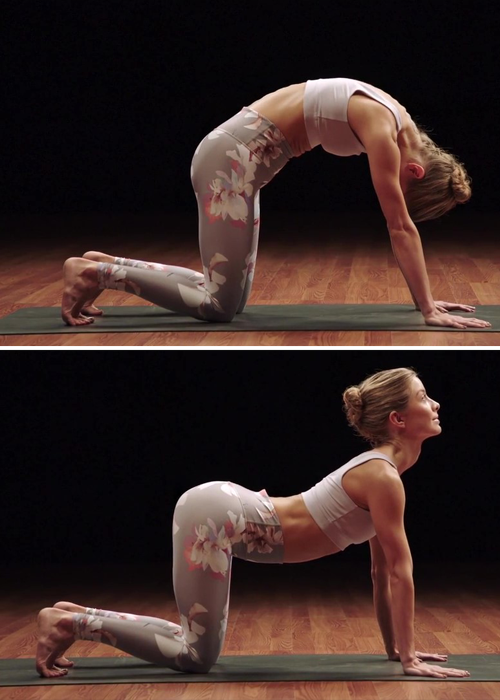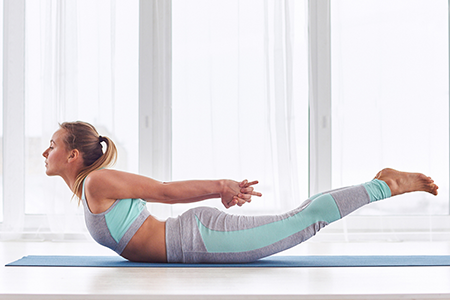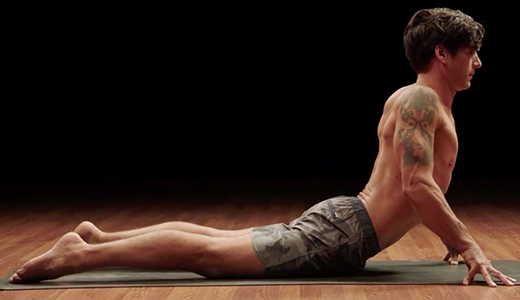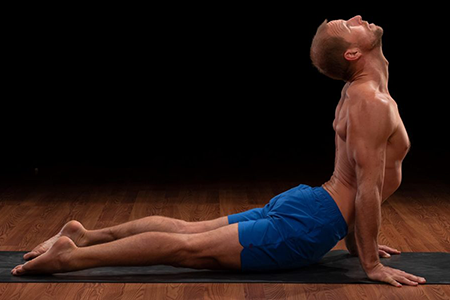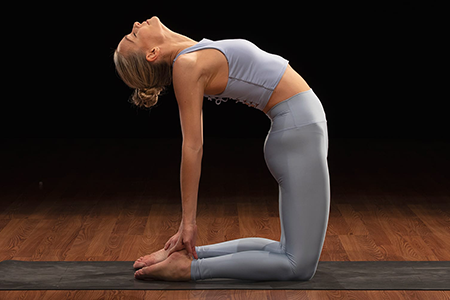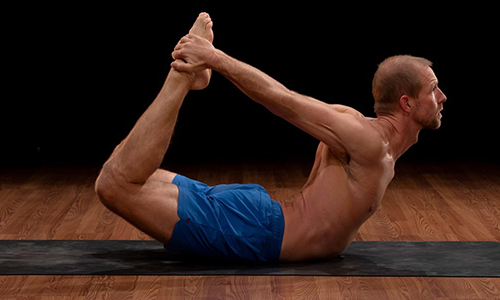
[ad_1]
Once you first learn to do a backbend, you’ll nearly instantly really feel its advantages in your physique, just like the reduction within the muscle mass round your backbone. However as you progress into deeper, tougher poses, they will additionally construct extra confidence that can assist you lean out of your consolation zone.
“Provided that we are able to’t really see our again physique, in a metaphorical sense, backbends will help us overcome worry by instructing us to lean into the unknown,” says Yoga52 teacher and AYP-Licensed Yoga Trainer Coach Brent Laffoon.
Whether or not you need to dive headfirst into deep backbends or ease into them extra delicate variations, listed here are some poses to get you began.
Methods to Do a Normal Backbend
Newbie: Bridge pose (Setu bandha sarvangasana)
- Lie in your again along with your arms by your sides. Stroll your toes in towards your glutes along with your knees bent and toes flat on the ground.
- Press into your heels and squeeze your glutes as you carry your hips away from the ground. Choice to interlace your fingers beneath you.
- Maintain your gaze towards the ceiling. Keep away from trying facet to facet to guard your backbone.
- Maintain for 3 to 5 breaths earlier than releasing. Repeat as desired.
Superior: Wheel pose (Chakrasana)
- Lie down in your again, bend your knees, and flatten your toes on the ground. Stroll your heels nearer towards your glutes till your knees align along with your toes.
- Prolong your arms towards the ceiling and flex your arms. Bend your elbows, and align your arms by your ears. Level your fingers ahead towards your shoulders.
- Push into your toes and arms concurrently to carry your hips away from the mat. Maintain right here for a breath.
- Proceed to press into the mat, then carry your head away from the ground. Let it grasp between your arms. (All the load ought to keep in your arms and toes.)
- Maintain the pose for a number of breaths as much as one minute, retaining your knees hip-width aside.
- To launch your wheel, bend your elbows and slowly decrease your head to the mat, then your hips.
6 Backbend Yoga Poses
Many yoga poses use backbends, and a few are tougher than others. Laffoon means that if you’re beginning out, it’s best to do a number of stretches, like solar salutations and easy twists, to organize your backbone.
1. Cat-cow pose (Bitilasana and marjaryasana):
Inhale: Cow pose
- Get down on all fours, along with your knees below your hips and your arms below your shoulders. Maintain your again flat, your gaze towards the ground, and your neck lengthy.
- As you inhale, carry your tailbone and chest towards the ceiling whereas dropping your stomach towards the mat.
- Maintain your shoulders away out of your ears, shoulder blades broad throughout your again, and head in keeping with your torso.
- Exhale into cat pose.
Exhale: Cat pose
- Begin in cow pose.
- As you exhale, spherical your again, tuck your tailbone, and curl your chin towards your chest.
- Maintain your shoulders and knees in place.
- Inhale into cow pose.
- Repeat this circulate for as much as 10 breaths, or longer if desired
2. Locust pose (Shalabhasana)
- Lie in your abdomen along with your legs collectively and your arms by your sides. Relaxation your brow in your mat to guard your neck.
- Inhale to boost your head away from the mat and look ahead as you concurrently squeeze your interior thighs collectively to carry them away from the ground.
- Hover your arms off the mat and pinch your shoulder blades collectively to widen your collar bones.
- Rock ahead so that you’re in your stomach fairly than your hip bones.
- Maintain for a number of breaths, or as much as one minute.
- Return to the beginning place, then relaxation.
3. Cobra pose (Bhujangasana)
- Begin in a plank, and decrease all the best way down the ground. Go away your arms by your shoulders. Untuck your toes and press the tops of your toes into the mat.
- Lengthen your legs and squeeze your thighs collectively to the touch.
- Inhale, press into your palms or fingers, and carry your chest away from the ground utilizing the muscle mass in your arms and again. (Solely carry your chest to a peak that doesn’t put stress in your low again.)
- Maintain your elbows tucked into your sides by your ribs. Open your chest and draw your shoulders away out of your ears.
- Maintain for a number of breaths earlier than reducing again down.
4. Upward going through canine pose (Urdhva mukha svanasana)
- Begin in a plank, and decrease all the best way down the ground. Go away your arms by your shoulders. Untuck your toes and press the tops of your toes into the mat.
- Lengthen your legs and squeeze your thighs collectively to the touch.
- Inhale, push into your arms, straighten your arms, and carry your thighs away from the mat by urgent into your toes.
- Stack your shoulders instantly over your wrists. Look straight forward to guard your backbone.
- Maintain for a number of breaths earlier than reducing again down.
5. Camel pose (Ustrasana)
- Start in a kneeling place and stack your knees instantly below your hips. Push the tops of your toes into the mat.
- Place your arms behind your again and relaxation your palms towards your sacrum along with your fingers pointed down towards the ground.
- Raise your chest, and have interaction your core. Squeeze your glutes and draw your hips and thighs ahead, bend your backbone.
- Begin along with your gaze towards the ceiling as you lean again (and you’ll see the again wall), choice to drop your head again.
- Maintain for at the very least 5 breaths, as much as one minute.
- To return to the beginning place, squeeze your glutes, interact your core, and draw your self again to the beginning place. Let your head come up final.
6. Bow pose (Dhanurasana)
- Lie face down in your mat, legs hip-width aside, brow resting on stacked arms.
- Press the tops of your toes into the ground and straighten your legs as you tuck your tailbone towards the ground. Observe a delicate carry beneath your navel.
- Raise your brow off your arms and carry your chest as you concurrently agency your buttocks and the backs of your legs towards the ground.
- Attain each of your arms behind you concurrently, rotating them so your palms face one another, and bend your knees.
- Raise your chest and legs excessive sufficient you could seize the outsides of your ankles (not the tops of your toes). Attempt to hold the soles of your toes parallel to the ceiling.
- Retaining your knees hip-width aside, maintain your ankles firmly so the backward resistance of your legs helps to maintain your chest lifted.
- In case your higher again is transferring nicely and also you’re capable of look upward, give {that a} strive. Keep away from throwing your head again, and work on transferring your shoulder blades down and away out of your ears.
- Maintain for a number of breaths, then slowly launch and relaxation in your stomach.
5 Advantages of Backbends
Laffoon is a large fan of backbends, particularly cobra pose. Listed here are the advantages that backbends can have in your physique and thoughts.
1. Launch stress
Backbends assist you lengthen your backbone and discover launch in locations the place you maintain plenty of stress, such because the lumbar backbone and the sacrum.
2. Enhance posture
Most individuals bend ahead all day lengthy, which locations stress on the backbone, particularly after we are on the pc or texting. Backbends can counter dangerous posture by strengthening the spinal erectors, the first muscle mass concerned in creating wholesome posture, says Laffoon.
3. Enhance vitality
Yoga backbends are particularly energizing and invigorating, says Laffoon. That’s as a result of they faucet into your circulatory system, which will increase cerebral blood circulate.
4. Decrease stress
BKS Iyengar, the founding father of Iyengar yoga, really helpful yoga backbends to his college students to spice up their temper, and he was onto one thing: This research reveals that 52 ladies have been capable of lower their stress and anxiety-related signs with simply 12 periods of yoga.
5. Promotes deep respiration
Backbends open your shoulders and chest, which might make more room in your lungs.
Once you open your chest, you improve your capability for deeper respiration, thus supporting your cardiovascular well being. And this research cites yogic respiration as a option to decrease blood stress.
[ad_2]
